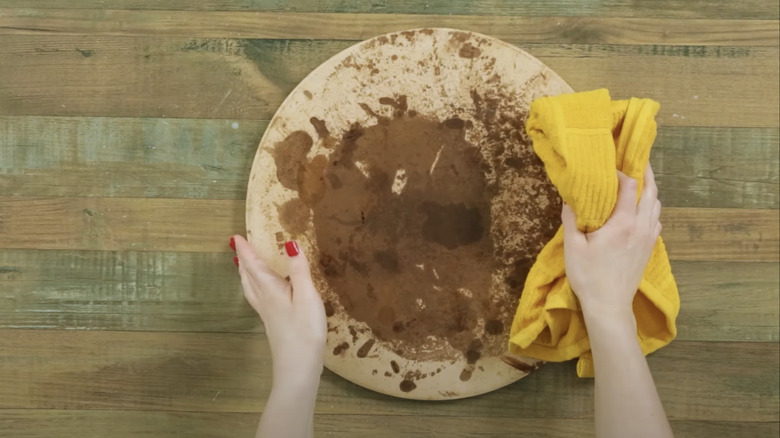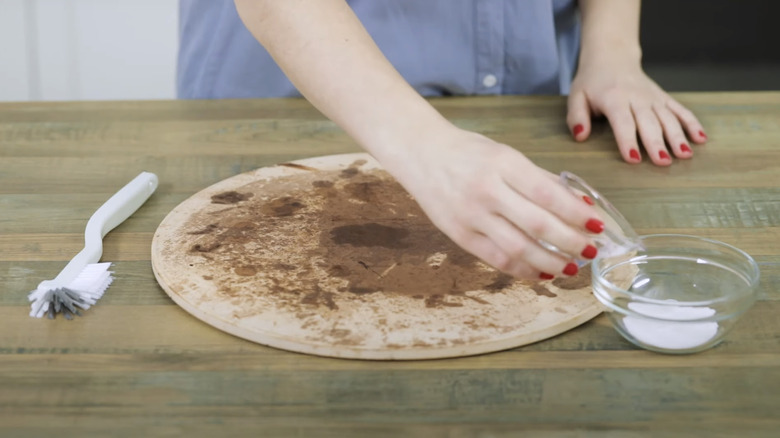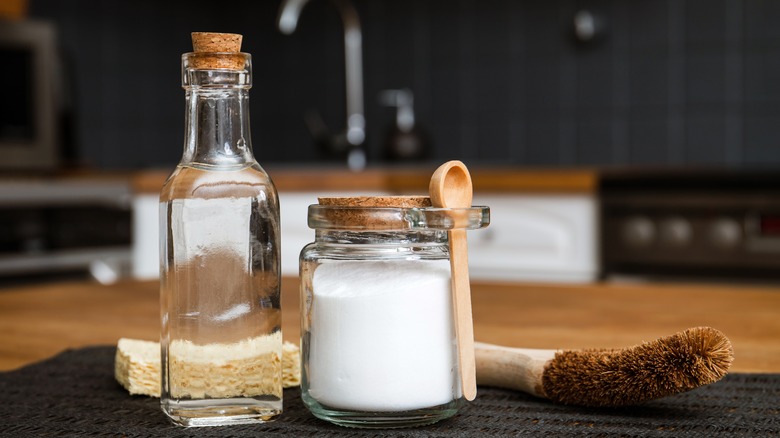How To Clean A Pizza Stone Without Cracking It
A pizza stone is a simple, useful tool that can completely change the quality of your homemade pies. All you need to do to make use of it is to put the dough and ingredients on top, and then pop it in your oven and let it all cook. But, when it comes to caring for it properly over time, and cleaning it, be ready to use a little elbow grease and proceed with caution. While the word "stone" implies that this piece of kitchen equipment is pretty sturdy, a pizza stone can easily be cracked if you're not careful.
The key to avoiding cracks forming is to prevent any instances of thermal shock. In simpler terms, that means you want to make sure that the pizza stone never changes temperature too quickly. For example, after using the tool to cook up dinner, allow it to slowly return to room temperature — either in the oven or on your stovetop, away from anyone or anything that could get burned — over the course of a few hours before cleaning it.
Its ceramic base needs some extra TLC
It would make sense that pizza stones are made of materials that conduct heat well. Since pizza is traditionally cooked at high temperatures for a short amount of time, this tool helps to quickly and evenly bake the dough for a fluffy interior and crispy exterior. The material of the pizza stone, however, has to be able to handle the heat. For this reason, pizza stones are often made of ceramic, which can expand as temperature rises, but can also rapidly contract if exposed to cold air or water, causing it to break.
The porous nature of the pizza stone is both its strength and its weakness; it also means it quickly absorbs the flavors of the food with which it comes into contact. Because residue from ingredients such as olive oil or cheese can go rancid, it's best to clean your pizza stone after every use to prevent it from developing an unpleasant odor.
What you need to clean your pizza stone
While a pizza stone requires some special attention during the cleaning process, the necessary supplies are nothing out of the ordinary. All you need is a container of baking soda and a cleaning brush, such as an unused toothbrush or a bottle brush.
After cooking with your pizza stone and allowing it to slowly cool to room temperature, carefully place it on your kitchen counter near a sink. Use the brush to scrape away any crumbs or bits of food that have stuck to the pizza stone. If there are more stubborn food remnants or places where the pizza stone has been stained, make a paste using a small amount of baking soda and water, then apply this to the base, working it through gently with the brush. Afterward, thoroughly rinse the stone with clean, lukewarm water and allow it to fully dry before using it again.
Most importantly, always clean by hand and be sure to keep your pizza stone out of the dishwasher, where it can more easily become cracked.



